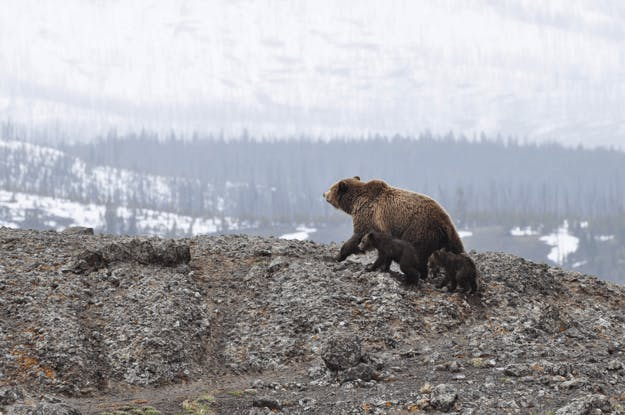
If you think you understand Alaska, you’re wrong. America’s wayward left arm is as mysterious today as the day Andrew Johnson purchased it from a cash-strapped Russia back in 1867. It’s not just that Alaska is cold (it is). Nor is it that The Great Land is so far away and disconnected from the rest of the U.S. that most people wouldn’t want to live there. No, Alaska is mysterious because of its people. The rugged individualists who carve out a place for themselves in the frigid North. The rest of America has respect for our Alaskan neighbors, even if we don’t quite understand what makes them tick. But even in a state that has 15.2 (registered) guns per 1,000 people, crime still exists. Criminals still brave the danger of a well-armed homeowner and still break into other people’s homes. Alaska may be heavily armed and sparsely populated, but home security in Alaska is just as important as it is in pretty much any state.
Home Security Provider Requirements for Alaska
Looking at Alaska’s population density, one might think that it’s nearly impossible to be the victim of a burglary. But statistics can be extremely misleading. Sure, Alaska’s population density is little more than 1 person per square mile, but this number does not reflect reality. Almost half of Alaska’s residents live Anchorage, a city of 300,000. The rest of Alaska’s residents are spread throughout smaller cities with Alaska’s second largest city, Fairbanks, hosting a population of around 32,000. As one might expect, the three biggest cities in Alaska are also the ones with the most property crimes. If you call Alaska home, and you live in either Anchorage, Juneau or Fairbanks, chances are you’re concerned more about burglars than bears.
Given the general emphasis on freedom and the smaller market home security, the Alaskan state government is fairly mum when it comes to what home security providers can and cannot do in the state. There are a few rules on the state level. Much like Florida, Alaska has requirements regarding electrician certifications (pdf). However, due to the rather spread out population in the state, these rules are much more lax than you’ll find anywhere else in the country. Anyone installing electrical work under 48 volts does not need a license. As most security alarms are fairly low voltage, and typically under 48 volts, you should get where we’re going with this. If you’re getting a security system installed in Alaska, almost anyone can install your system and it might be wise to go ahead with a self-installed security system.
Most of the regulations on home security providers in the state are a product of municipalities deciding their own rules. Such is the case of Anchorage, which has its own code of conduct (pdf) for home security providers. Well, we take that back. The local regulations are not so much on providers as they are on users. And in this case, they’re focused on exactly what you might expect: False alarms. It’s in the home security provider’s interest to ensure that their customers know about false alarms and how to prevent them. The only real regulation in Anchorage for providers is that they do not install alarms that produce an audible sound for more than 15 minutes. All other regulations directly affect customers.
If you own an alarm in Anchorage, there’s a $50 fee for registration. All subsequent yearly registrations are — thankfully — free of charge. However, false alarms can get rather pricey. The first false alarm that summons your local police will get you a slap on the wrist. A second or third will eat away $125 from your bank account. Any more than that will result in a $25 fine. However, if you somehow manage to get 12 false alarms in a calendar year, your registration will automatically be revoked. So no matter how many bears you might see roaming around your house, fight the urge to pull the alarm. It’s better to just pick up the phone and call animal control. Or scare it off with one of the many guns you have lying around.
Using Home Security Cameras in Alaska
Unless you’re purposefully engaging in some rather indecent voyeurism, if you live in Alaska, go ahead and put up some cameras! Alaska has one law on the books about the illegality of recording someone nude or partially nude without their consent. One stipulation to this law is that law enforcement, in the act of their doing their paid duty, can record people in the buff without their consent. We’ll trust that no police officers would ever abuse this power, of course. Even Alaska’s eavesdropping laws are fairly loose compared to other states. It’s a misdemeanor to purposefully use a recording device (say, a camera with sound) to eavesdrop on others. In some states this is a felony. Even so, if you are part of the conversation, you’re fine. And chances are if your camera picks up audio that you never purposefully intended it to pick up, few prosecutors in Alaska are going to try to convict you of a crime.
Long story short: Put up those security cameras, Alaska! There’s little standing in the way between you and a well-protected home. That said, please do follow a bit of common sense. Never put those cameras where you know they’re going to record someone in a somewhat…intimate setting. That includes ones that are both inside and outside of your home.
Safety During Natural Disasters
It almost feels wrong for us to tell Alaskans how to handle a natural disaster. If there’s one state where people simply know how to survive, it’s Alaska. Some of America’s most rugged survivalists reside in the state, many of whom likely laugh at the way people in the lower 48 react over even the tiniest snowflakes. Yet Alaska is prone to more than just blizzards. The state is perhaps the only one in the country where almost every form of natural disaster is possible and common. Indeed, other than tornadoes, Alaska gets pretty much everything: Earthquakes, wildfires, volcanic eruptions, floods, mudslides, avalanches, and even tsunamis.
It’s that last one, the tsunami, which many Alaskans may not know how to deal with. They’re possible in Alaska, but also very rare. In 1964, a major, 9.2 earthquake rocked the state. However, it wasn’t the earthquake that took most of the 134 lives lost that day. It was the subsequent tsunamis. Alaskans, most of whom live in coastal cities, were ill prepared. A total of 113 people died as a result.
The recent spate of earthquakes should have Alaskans worried. The “big one” might strike again, and if it does residents need to know what to do if tsunamis follow. Tsunamis are massive waves that come crashing in after heavy seismic activity. They are extremely destructive. For a tsunami, there is only one thing you can do: Escape. Quickly. If a major earthquake has occurred, or you hear a tsunami warning, get to higher ground immediately. And higher ground should not simply be a tall building. Tsunamis are powerful enough to knock down buildings. The speed and force of the water is different than a typical flood. Make sure you have emergency kits of food, water, clothing, flashlights, batteries and radios ready. Move inland as far as you can make it, and as high as you can go when doing so. Tsunamis can travel miles inland, with tens of thousands of metric tons of water. And of course, make sure you bring your pet along with you.
Some have called Alaska the “final frontier”. Vast and unexplored, America’s most northern state is still a mystery to many people. Despite having a small population, it’s not without its share of crime. Obtaining home security in Alaska is certainly possible, but finding a provider may be a challenge if you’re outside of the major cities. Nevertheless, protect yourselves, Alaska! We’d hate to see something bad happen to you.

